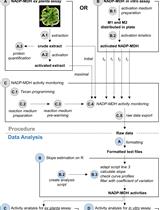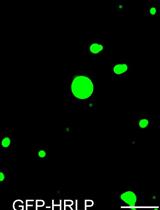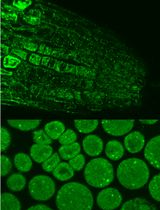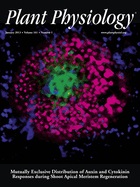- Submit a Protocol
- Receive Our Alerts
- Log in
- /
- Sign up
- My Bio Page
- Edit My Profile
- Change Password
- Log Out
- EN
- EN - English
- CN - 中文
- Protocols
- Articles and Issues
- For Authors
- About
- Become a Reviewer
- EN - English
- CN - 中文
- Home
- Protocols
- Articles and Issues
- For Authors
- About
- Become a Reviewer
Pectin Methylesterase Activity Assay for Plant Material
Published: Vol 3, Iss 17, Sep 5, 2013 DOI: 10.21769/BioProtoc.894 Views: 14322
Reviewed by: Tie Liu

Protocol Collections
Comprehensive collections of detailed, peer-reviewed protocols focusing on specific topics
Related protocols

A Semi-throughput Procedure for Assaying Plant NADP-malate Dehydrogenase Activity Using a Plate Reader
Kevin Baudry and Emmanuelle Issakidis-Bourguet
Aug 20, 2023 1412 Views

An in vitro Assay to Probe the Formation of Biomolecular Condensates
Yu Zhang and Shen Lisha
Sep 5, 2023 3065 Views

Immunofluorescence for Detection of TOR Kinase Activity In Situ in Photosynthetic Organisms
Ana P. Lando [...] Giselle M. A. Martínez-Noël
Dec 20, 2024 1731 Views
Abstract
Homogalacturonans, the most abundant pectins of the plant cell wall, can be methylesterified at the C-6 position of the galacturonic acid residues. Demethylesterification of cell wall pectins is catalyzed by apoplastic pectin methylesterases (PMEs). Several plant developmental processes and plant-environment interactions involve PME-mediated cell wall modification, as it promotes the formation of Ca2+cross-links along the stretches of the demethylesterified galacturonic acid residues (Wolf et al., 2009; Müller et al., 2013), and thus influences the biophysical properties of plant cell walls. Here, we describe a protocol that can be used to estimate the activity of PMEs in a total soluble protein extract from plant or seed tissues. Soluble protein is extracted from the plant/seed materials, and a coupled enzyme assay is performed, according to a procedure modified from Grsic-Rausch and Rausch (2004). The methanol released from methylesterified pectins as a result of PME activity is oxidized to formaldehyde by alcohol oxidase. The formaldehyde is then used as an electron donor by formaldehyde dehydrogenase to reduce NAD+ to NADH. The formation of NADH from NAD+ is followed spectrophotometrically, and used to estimate the PME activity in the protein extract.
Materials and Reagents
- Arabidopsis thaliana plant or seed materials
- Liquid nitrogen
- 100 mM sodium phosphate buffer (pH 7.5)
- 0.5% (w/v) Pectin (in dH2O) (Sigma-Aldrich, catalog number: P-9135 )
- 0.1 U/μl Alcohol oxidase (in 100 mM phosphate buffer) (pH 7.5) (Sigma-Aldrich, catalog number: A2404 )
- 0.5 U/μl Formaldehyde dehydrogenase (in 100 mM phosphate buffer) (pH 7.5) (Sigma-Aldrich, catalog number: F1879 )
- 0.4 mM NAD+ (in 100 mM phosphate buffer) (pH 7.5) (Sigma-Aldrich, catalog number: N8410 )
- PME from orange peel (Sigma-Aldrich, catalog number: P5400 )
- Protease inhibitor cocktail (1x) (contains 100 mM PMSF, 2 mM Bestatin, 0.3 mM Pepstatin A, and 0.3 mM E-64) (abmGood, catalog number: G135 )
- Protein extraction buffer (see Recipes)
- Master mix (see Recipes)
Equipment
- Eppendorf tubes
- Mortar and pestle
- Vortexer
- Centrifuge with cooling function
- 96 well microplates
- Microplate reader
Procedure
- Plant or seed tissue (Arabidopsis thaliana) is weighed. Use about 100 mg per extraction.
- Tissues are ground to a fine powder in liquid nitrogen using a mortar and pestle. The tissue must be kept frozen during grinding.
- Twice the fresh weight (w/v) of extraction buffer is added to the powder, and the powder allowed to thaw in the buffer.
- Vortex for 10 sec.
- Extracts are rotated at 4 °C for 30 min and centrifuged at 11,500 x g at 4 °C for 20 min.
- The supernatant is the soluble protein extract. Use fresh supernatants immediately for the PME enzyme assay, as the activity can be affected by freezing.
- Four replicates of each sample (10 μl each) are pipetted into microplate wells. For the negative control, use protein extraction buffer only. For a positive control, use a solution of commercially available PME in protein extraction buffer.
- Master mix (180 μl) is added to each well and mixed by pipetting up and down. Avoid the formation of bubbles.
- To start the reaction, add 10 μl of the pectin solution to the samples, the negative and the positive control, but not to the background controls. Mix well by pipetting up and down.
- Immediately put the plate into the microplate reader. If bubbles have formed during the mixing process, shake plate for 5 sec. Record the changes in absorption at 340 nm over 15 min at room temperature.
- The change in absorption per unit time over the linear part of the reaction is calculated for each well, and used to calculate the increase in concentration of NADH. The NADH concentration is calculated using Lambert-Beer's law with the extincion coefficient ε340 for NADH (6,220 M-1cm-1). One nkat PME activity is defined as 1 nmol NADH formed per second.
- The activities of the triplicates are averaged.
Recipes
- Protein extraction buffer
100 mM Tris-HCl (pH 7.5)
500 mM NaCl
1x protease inhibitor cocktail
- Master Mix (per sample)
20 μl pectin solution
2 μl alcohol oxidase solution
2 μl formaldehyde dehydrogenase solution
156 μl NAD+ solution
Acknowledgments
This work was supported by the Swiss National Science Foundation (grant 31003A_127563; to TB) and by stipends to SB from the European Molecular Biology Organisation (EMBO: ALTF 61-2010) and the Leopoldina Fellowship Programme of the National Academy of Science Leopoldina (LPDS 2009-35).
References
- Grsic-Rausch, S. and Rausch, T. (2004). A coupled spectrophotometric enzyme assay for the determination of pectin methylesterase activity and its inhibition by proteinaceous inhibitors. Anal Biochem 333(1): 14-18.
- Mueller, K., Levesque-Tremblay, G., Bartels, S., Weitbrecht, K., Wormit, A., Usadel, B., Haughn, G. and Kermode, A. R. (2013). Demethylesterification of cell wall pectins in Arabidopsis plays a role in seed germination. Plant Physiol 161(1): 305-316.
- Wolf, S., Mouille, G. and Pelloux, J. (2009). Homogalacturonan methyl-esterification and plant development. Mol Plant 2(5): 851-860.
Article Information
Copyright
© 2013 The Authors; exclusive licensee Bio-protocol LLC.
How to cite
Readers should cite both the Bio-protocol article and the original research article where this protocol was used:
- Mueller, K., Bartels, S. and Kermode, A. R. (2013). Pectin Methylesterase Activity Assay for Plant Material. Bio-protocol 3(17): e894. DOI: 10.21769/BioProtoc.894.
- Mueller, K., Levesque-Tremblay, G., Bartels, S., Weitbrecht, K., Wormit, A., Usadel, B., Haughn, G. and Kermode, A. R. (2013). Demethylesterification of cell wall pectins in Arabidopsis plays a role in seed germination. Plant Physiol 161(1): 305-316.
Category
Plant Science > Plant developmental biology > Morphogenesis
Plant Science > Plant biochemistry > Protein > Activity
Biochemistry > Carbohydrate > Polysaccharide
Do you have any questions about this protocol?
Post your question to gather feedback from the community. We will also invite the authors of this article to respond.
Share
Bluesky
X
Copy link










